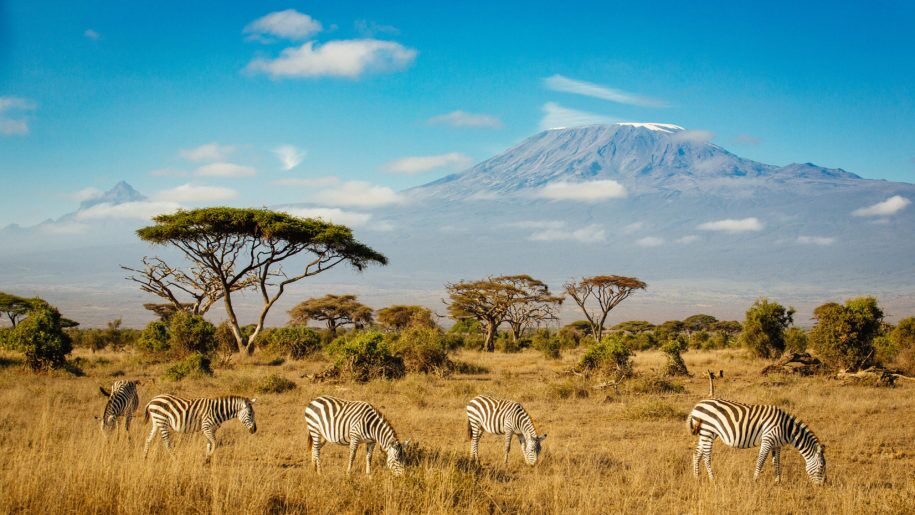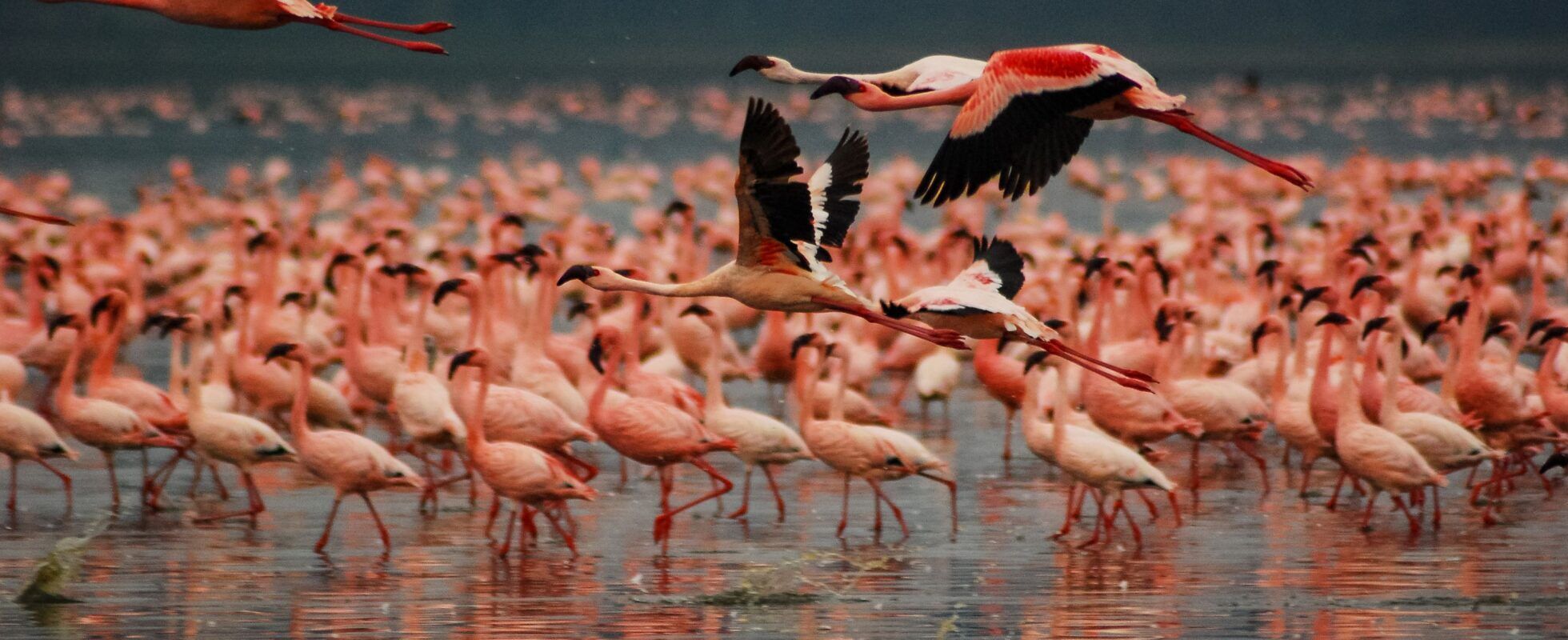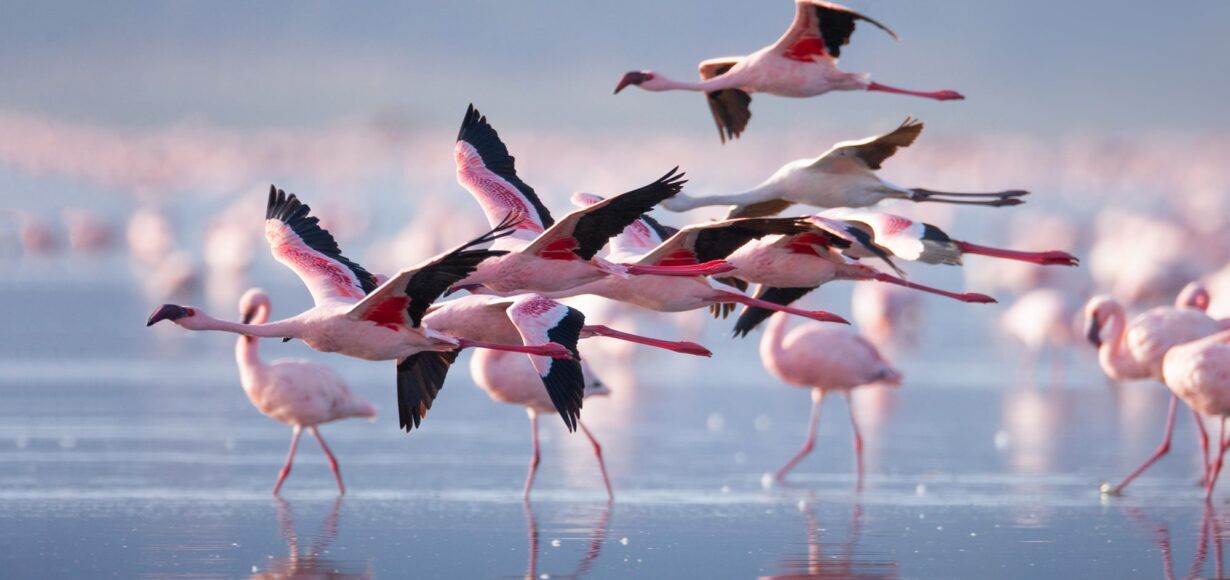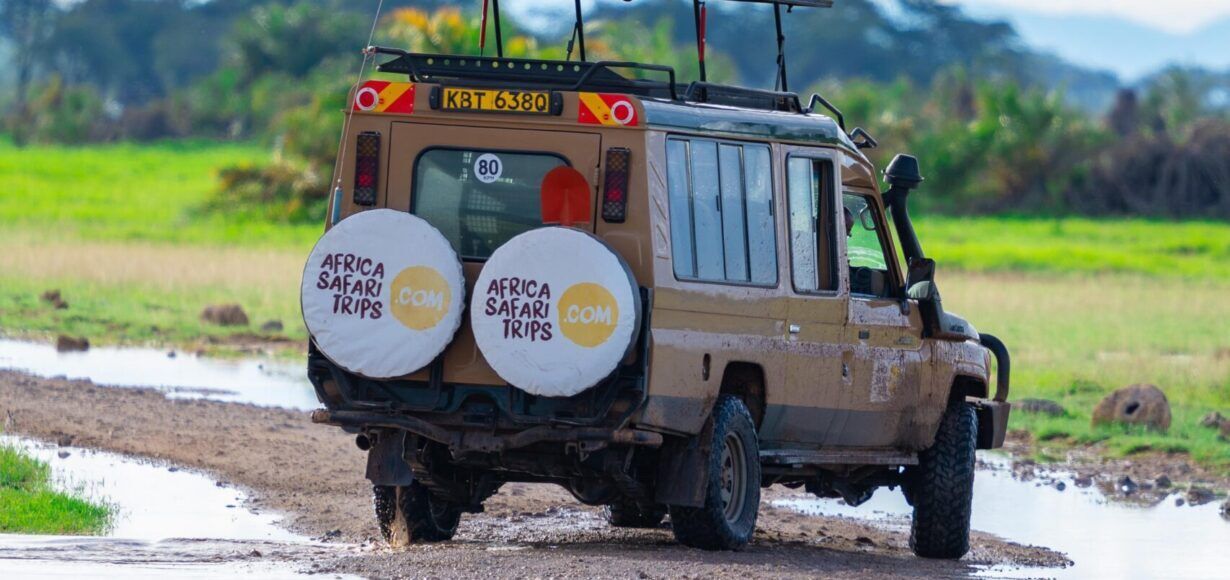
- 24/7 service
- All accommodations

Imagine driving over the hills of the Great Rift Valley, turning a corner and seeing a shimmering lake between the hills. Welcome to Lake Nakuru! Just a four hour drive from Nairobi, this lake of 45 square kilometres lies at the foot of Lake Nakuru National Park. At 88 square kilometres, this national park is relatively small, but still home to four of the Big Five. Lake Nakuru National Park is one of the soda lakes in the Great Rift Valley – an intracontinental rift whose East African part also runs through Kenya. The soda lakes in the Great Rift Valley are special because they are usually filled with algae, which attract many flamingos.
If you like viewpoints, you can take a trip to Baboon Cliff – a rock formation where baboons cavort. However, hold on to your camera and personal belongings tightly, as baboons are excellent thieves! Also close-by are the Makalia Falls. Either just marvel at them during a picnic or go on a hike on the beautiful trails around it. The Menengai Crater is another highlight waiting to be explored. It’s one of the largest volcanic craters in the world and the locals believe that evil spirits roam the area #spooky. And last but not least, Lake Nakuru is home to the largest euphorbia forest in Africa which you can of course explore as well.
Lake Nakuru National Park is a good stopover on the way from Nairobi to the Masai Mara. It is also possible to go there for just one day/night. Stay in one of the lodges on the edge of the hills surrounding the lake and enjoy the magnificent view!
Lake Nakuru used to have millions of flamingos, but ten years ago rising water levels caused these birds to move elsewhere. For a time, they all but disappeared. They slowly returned, but there are not the numbers as there used to be. Still, Lake Nakuru wows with its more than 50 species of mammals such as the rare Rothschild’s giraffe, buffalo, zebra, leopard, lion and more than 400 different species of birds.
We all know that leopards are amazing climbers. Their cousins, however, we don’t get to see in trees very often. In Lake Nakuru National Park you can meet these Alex Honnolds of the lion world. Tree-climbing lions are said to be larger and more muscular than “regular” lions, which is why they can take their naps on branches. So keep your eyes open and your camera close: the next lion might just be relaxing in a tree near you.
In collaboration with the Rhino Rescue Charitable Appeal Trust, the Kenyan government established the first rhino sanctuary here in 1987. When the sanctuary was officially opened, 17 rhinos from a private ranch in Solio joined the two rhinos already in the park, and later eleven more rhinos were added to the sanctuary. There are currently 150 rhinos living in Lake Nakuru National Park, 80% of which are white rhinos with a wide upper lip and 20% are black rhinos with a hooked lip. It’s especially easy to spot the white rhino at the edge of the lake – a unique sight.
Lake Nakuru National Park is a four hour drive or a twenty minute flight from Kenya’s capital Nairobi.
The climate at Lake Nakuru is rather mild and temperatures are more or less constant throughout the year. Daytime temperatures are comfortably in the mid to upper twenties, although it is much cooler at night. Warm clothing for early morning game drives is a must! The wettest months are April and May. The rest of the year is relatively dry with scattered rains.
The best time to spot flamingos is between November and May, when there are enough algae in the lake. Besides, the dryer months (January, February) are good to also spot other animals due to lower grasses.
The landscape of Lake Nakuru National Park is painted by a crater, a waterfall, a lush forest and of course the main star: Lake Nakuru itself, glowing in pink due to the countless of flamingos relaxing here. However, there’s even more to discover (yes, really!): keep your eyes open for various antelopes, the endangered African wild dog, black and white rhinos and climbing lions.


